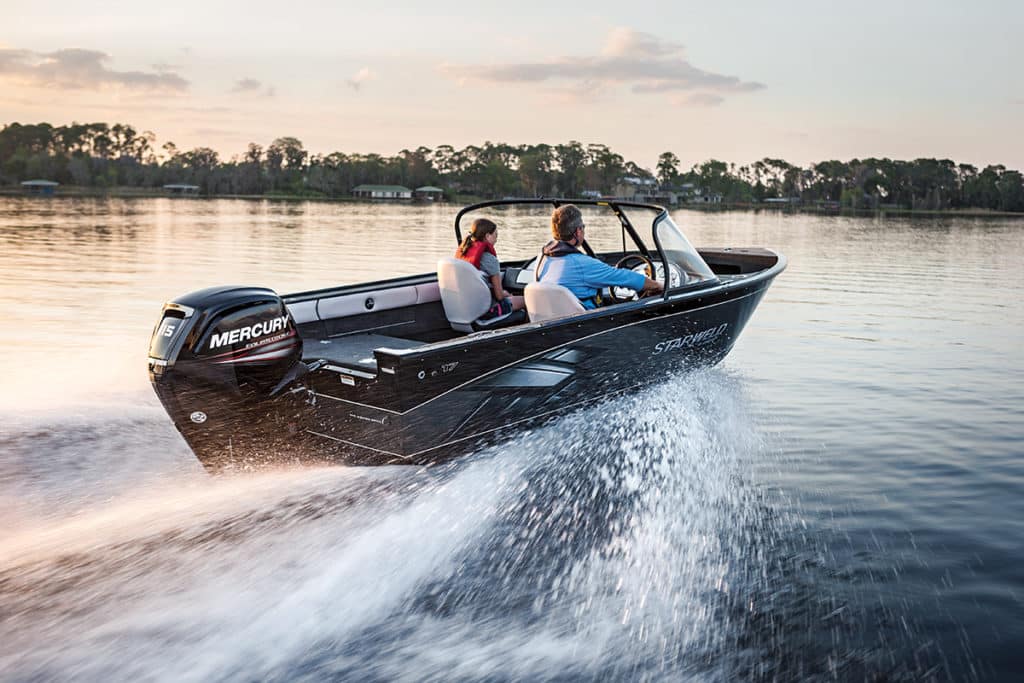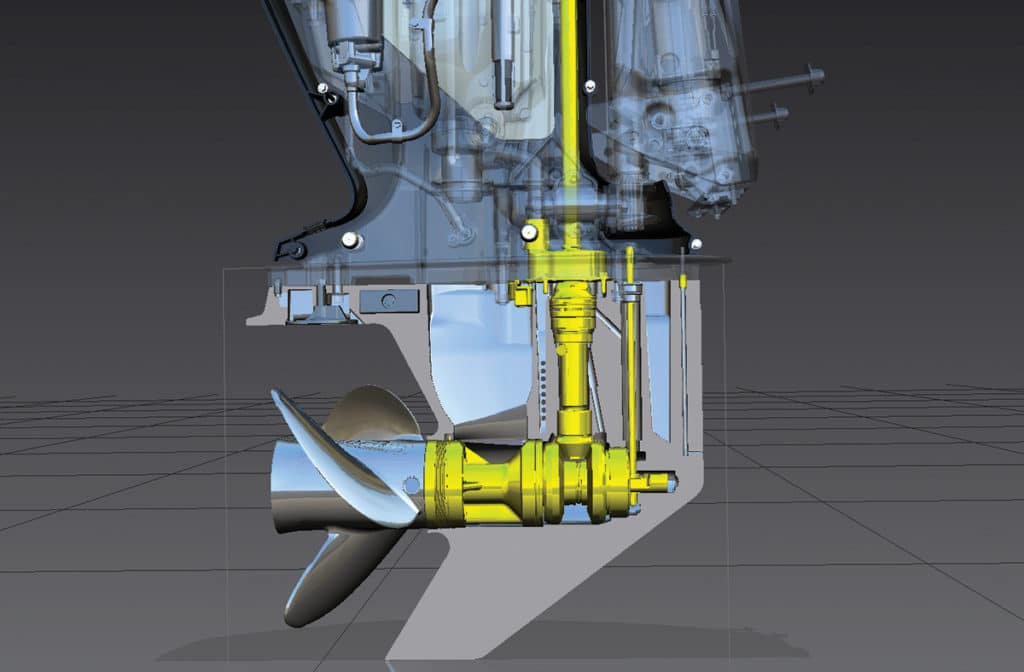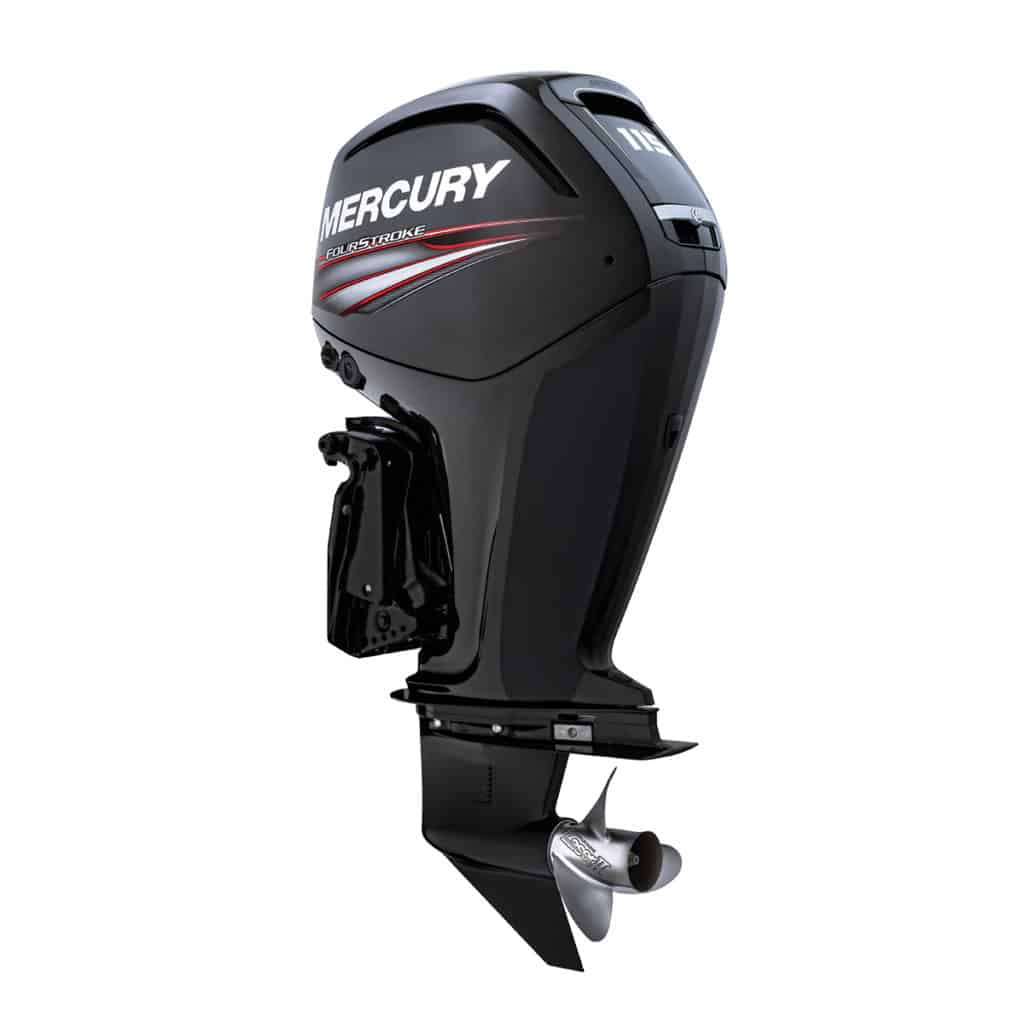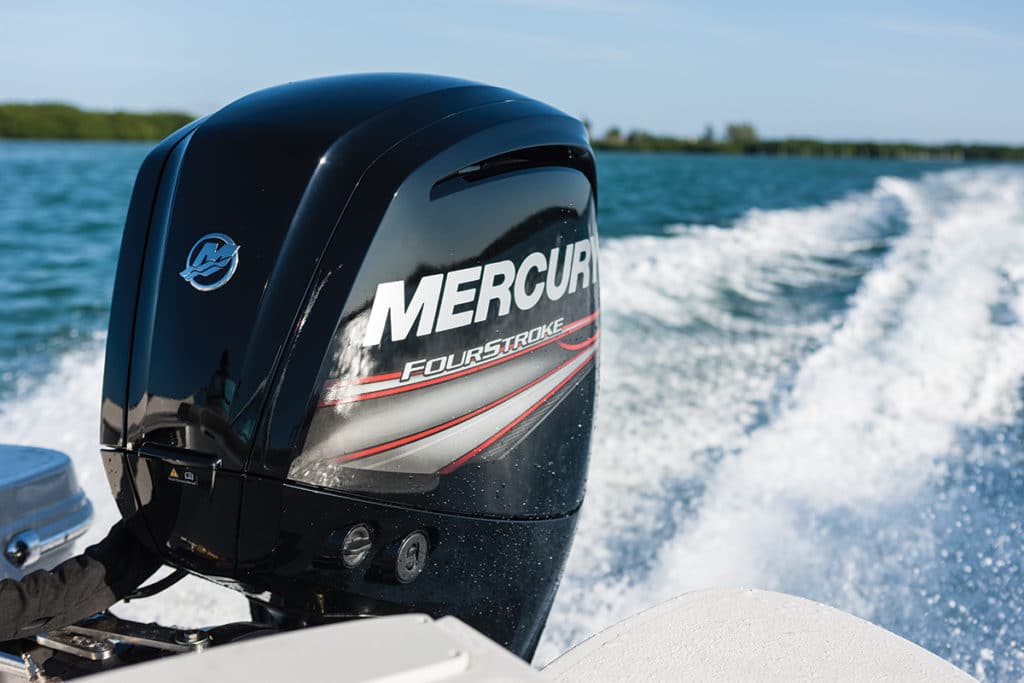



One-third of Mercury’s engine market share goes to the midrange engines with 75-, 90- and 115-horsepower output. So, once it had a full line of highly efficient four-strokes, including Verado outboards to 350 hp, it was no surprise when Mercury circled back to these popular midrange engines.
After all, pontoon boats, one of the hottest segments of recreational boating today, rely almost solely on midrange outboards. Add fishermen poised to mount them on aluminum bass boats and bay boats up to 19 feet, plus catamaran fans planning to power smaller cats, and you have a sizable market. Did we mention that Mercury offers this new 115 in a counter-rotating gear case?
Mercury’s goal in this lineup’s redesign was to refine and retool its four-stroke offerings to have higher output, lighter weight and lower emissions with less maintenance cost.
Maintenance costs of four-strokes substantially spike over those of two-strokes because most require expensive valve adjustments. The costs can range to $100 or more per cylinder. That is a big bite to take after 200, 300 or even 500 hours of operation — especially in twins.
Only Mercury avoids this sobering expense in its high-performance four-stroke engines by offering self-adjusting valve trains. So we weren’t surprised to see self-adjusting valves in these new 75-, 90- and 115-horsepower models. Besides that, when the motors returned from the fat farm they came back in a svelte streamlined shape, visibly more trim than in the previous model. They lost weight too, making the 115 the lightest outboard in its class — and with big, smooth-running four-cylinder displacement. They meet all the California Air Resources Board (CARB) and Environmental Protection Agency requirements, naturally, and after test-running the powerful 115s near the Fond du Lac, Wisconsin, factory, we think they are a hit.
Mercury powered a number of boats including bay boats, pontoons and runabouts. We ran a pair of Carolina Skiff 218s with fiberglass casting decks and a center console. Even these solid, full-beam boats stepped up on plane quickly with the push of the 115s and maintained planing speeds down into the midteens.
Mercury also offered a new gear-case option for these motors called Command Thrust. It’s a refinement of its BigFoot gear cases, popular among pontoon boaters. The bullet is a little bulkier than the standard gear case, but the new 2.38:1 ratio and powerfully husky gears noticeably added more midrange thrust and control than the test boat with the new 115/standard gear-case setup had.
On our test boats, though, Command Thrust’s added torque came with noticeably more steering feedback than that from the standard gear case. That makes hydraulic steering a worthwhile investment in our book. Hydraulic steering is definitely needed at 150 horsepower and up, and 115 horsepower is normally a judgment call driven by the hair on your knuckles.
We’d say, in a boat with a recommended horsepower range of 115 to 150, the 115 with Command Thrust and hydraulic steering would give smooth power and control and a fatter wallet. To say we were impressed is an understatement.









